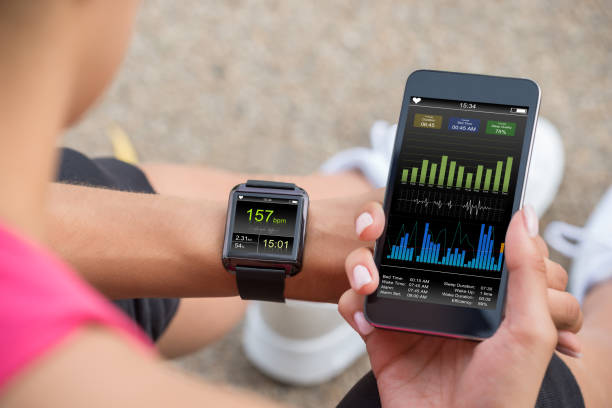Wrist-Based Glucose Tracking: Methods and Considerations
Wrist-worn devices are increasingly used to view and manage glucose information, but they rarely measure glucose directly. This overview explains how wrist-based systems typically work with continuous glucose monitoring (CGM), their advantages, common limitations, and what to evaluate before relying on them in daily life.

Wrist-worn technology for glucose awareness has grown rapidly, yet most devices on the market do not measure glucose directly from the wrist. Instead, they act as convenient displays and alert hubs for data generated by a continuous glucose monitoring (CGM) sensor worn on the body. Understanding how signals move from a sensor to your watch—and where limitations arise—helps set realistic expectations and supports safer, more informed use in the United States.
How do wrist wearables track glucose?
Most systems rely on a CGM sensor that measures glucose in interstitial fluid just under the skin. A small transmitter sends readings every few minutes to a smartphone or, in some cases, directly to a compatible smartwatch. The watch then shows current glucose, trend arrows, and alerts. In this setup, the watch is an interface, not the measuring instrument, which clarifies how glucose smartwatches monitor blood sugar levels in practice.
Some products or apps claim to estimate glucose using only optical sensors on the wrist. As of today, such approaches are not generally cleared by U.S. regulators for medical use. Accuracy, variability among users, motion artifacts, and hydration can affect optical estimates. For clinical decision-making, most people rely on FDA-cleared CGM sensors paired with software that can display data on a watch.
Benefits of on-wrist CGM alerts
The benefits of continuous glucose monitoring on wrist displays center on timely awareness. Discreet vibrations can prompt a quick glance to confirm a rising or falling pattern, helping users decide when to eat, dose insulin per their care plan, or pause activity. Having glucose and trend information on the wrist reduces the need to retrieve a phone, which is useful during exercise, driving breaks, work meetings, and nighttime monitoring.
Wrist access may also support caregivers. Shared data and alarms can help parents or partners stay informed without repeatedly checking a phone screen. Over time, seeing patterns alongside daily routines—meals, sleep, and activity—can make it easier to discuss adjustments with a healthcare professional.
Exploring wearable tech for diabetes
Exploring wearable tech for diabetes tracking includes more than glucose numbers. Many watches provide activity metrics, heart rate, and sleep trends that can be reviewed alongside CGM data in companion apps. This context can highlight patterns, such as consistent post-meal rises or dips during specific workouts.
Practical factors matter too: battery life of the watch and phone, Bluetooth stability, and whether the watch can receive data without the phone nearby. Some systems allow direct-to-watch connections, while others need the phone as a relay. Comfort, sensor adhesion, and skin sensitivity influence long-term use. Data privacy is also important—review what information is stored in the cloud, how sharing works, and how to revoke access if needed.
Learn more about glucose smartwatch options
When you want to learn more about glucose smartwatch setups, it helps to categorize what’s available: FDA-cleared CGM sensors that share data to a watch via official apps; third-party watch faces or complications that mirror smartphone data; and research-stage or wellness devices that claim noninvasive readings. Confirm regulatory status, read the device indications for use, and understand whether readings are intended for therapy decisions or only for awareness.
If you are considering a new device, evaluate alert customizability, whether you can view trend arrows on the watch, compatibility with your phone’s operating system, and offline behavior (for example, during runs without your phone). For some users, reviewing data after activities is enough; others prefer continuous wrist alerts to catch fast changes sooner.
Tips for daily reliability
To get the most from wrist-based viewing, keep transmitters and phones within recommended Bluetooth range, update apps and firmware, and note any known connectivity issues in release notes. Consider how watch and phone battery cycles align with sensor warm-up periods so that you don’t miss initial readings. If you use exercise modes on your watch, check whether they affect Bluetooth behavior or notification filtering.
It’s also helpful to document context for unusual readings—illness, new medications, dehydration, or site changes—so that trends are interpreted with care. Discuss recurring patterns with your clinician, especially if you’re making changes to insulin, meal timing, or activity plans.
Safety and limitations
CGM readings reflect interstitial fluid, which can lag behind blood glucose during rapid changes. Compression of the sensor site (for example, sleeping directly on it) may cause false lows. On-wrist viewing doesn’t remove the need to confirm readings per device instructions, especially when symptoms don’t match displayed values. Sensors can be affected by placement, adhesion, and warm-up periods; watches can miss alerts if notifications are muted or connectivity drops.
Finally, be cautious with claims that a watch alone can provide accurate glucose readings without a sensor. Check for regulatory clearance and published accuracy data, and seek guidance from your healthcare team before using any device to make treatment decisions.
This article is for informational purposes only and should not be considered medical advice. Please consult a qualified healthcare professional for personalized guidance and treatment.
Conclusion: Wrist-based glucose viewing is primarily a display and alert function layered on top of CGM sensors. When configured thoughtfully—alerts tuned to personal targets, reliable connectivity, and privacy settings in place—it can make glucose information more accessible throughout daily life while respecting the limits of current technology.




